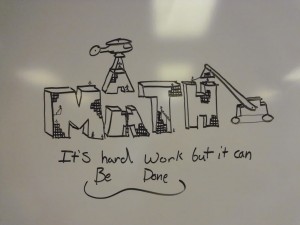“I never teach my pupils, I only attempt to provide the conditions in which they can learn.” ― Albert Einstein

Math isn’t something you do, or memorize, it’s something you experience, live and use at in all aspects of your life. I wanted my students to understand this, therefore I incorporated as many hand-on math experiences as I could in the various math units I taught during my practicum.
As I introduced my students to 2-D shapes and 3-D objects I used math stations. Stations where they could build and compare good stackers to not so good stackers, stations that allowed them to use 2-D objects to create patters, I had students rotate through a literacy station where they learned about shapes using books, I also had my students use their senses to guess what 3-D object was in the mystery box. My students loved this and the reaction from one of my least engaged students was, “This is fun, we should do it again,” and we did.
In many of my math lessons I had my students take on the role of detectives, they loved this. I gave them a problem I was having and off they went to solve which container would hold more water, in our Capacity Lesson, or what 2-D shapes they could find in the playground during our Recognizing 2-D Shapes in our Environment Lesson. These students were kinesthetic learners and they loved opportunities to explore and take control of their own learning.
I found my students learned so much through their hands-on experiences that when it came to explaining their learning or completing a worksheet on the experience they had done the day before it was no problem for them. My students took more knowledge from interactive experiences and activities than they would have from direct instruction and it made both my teaching experience and their learning experience much more fun.
See blog posts on various math activities done through-out my practicum